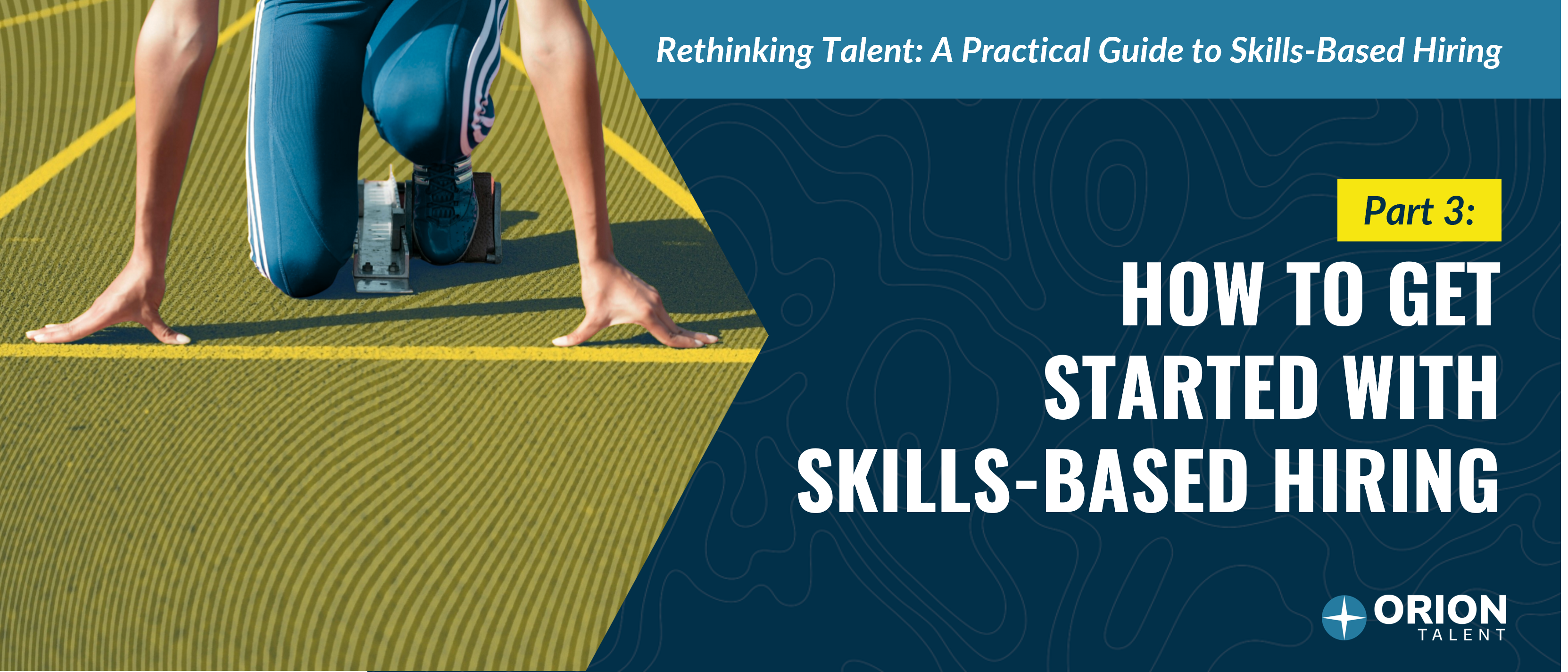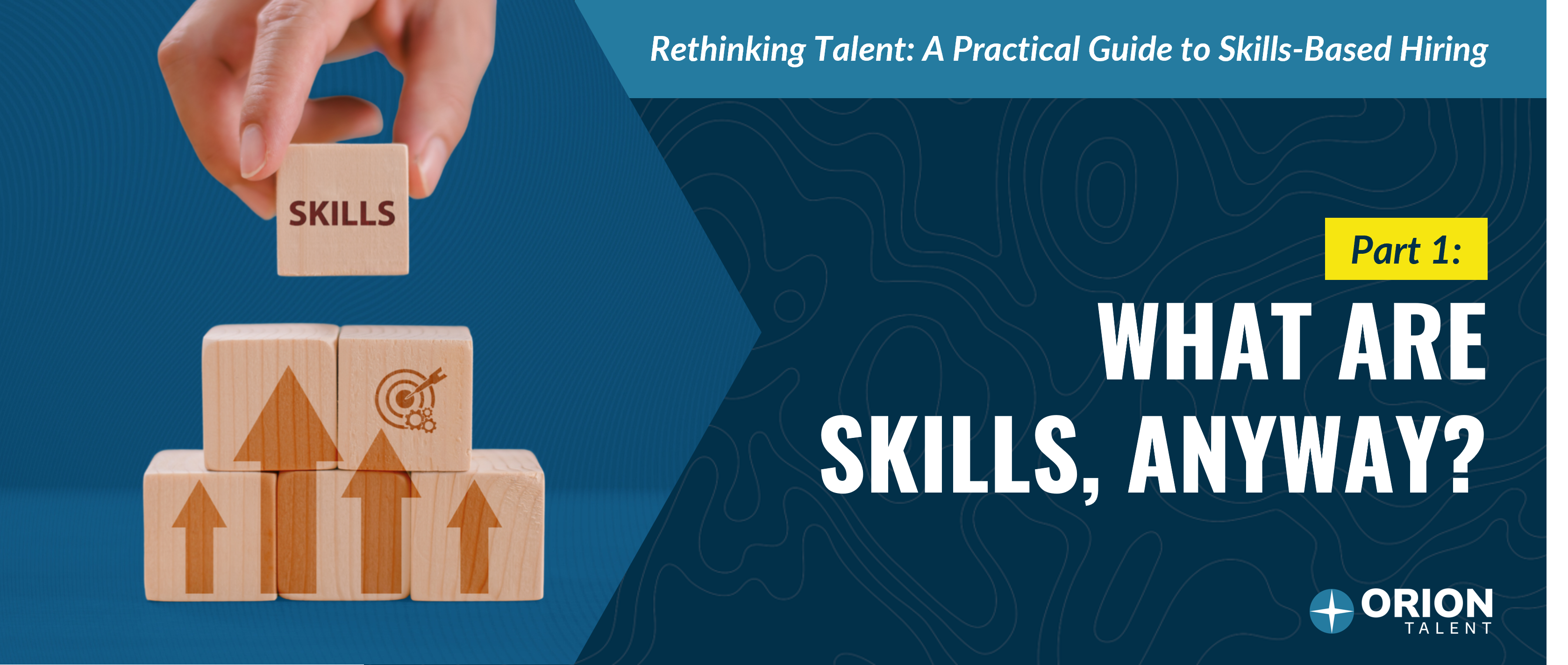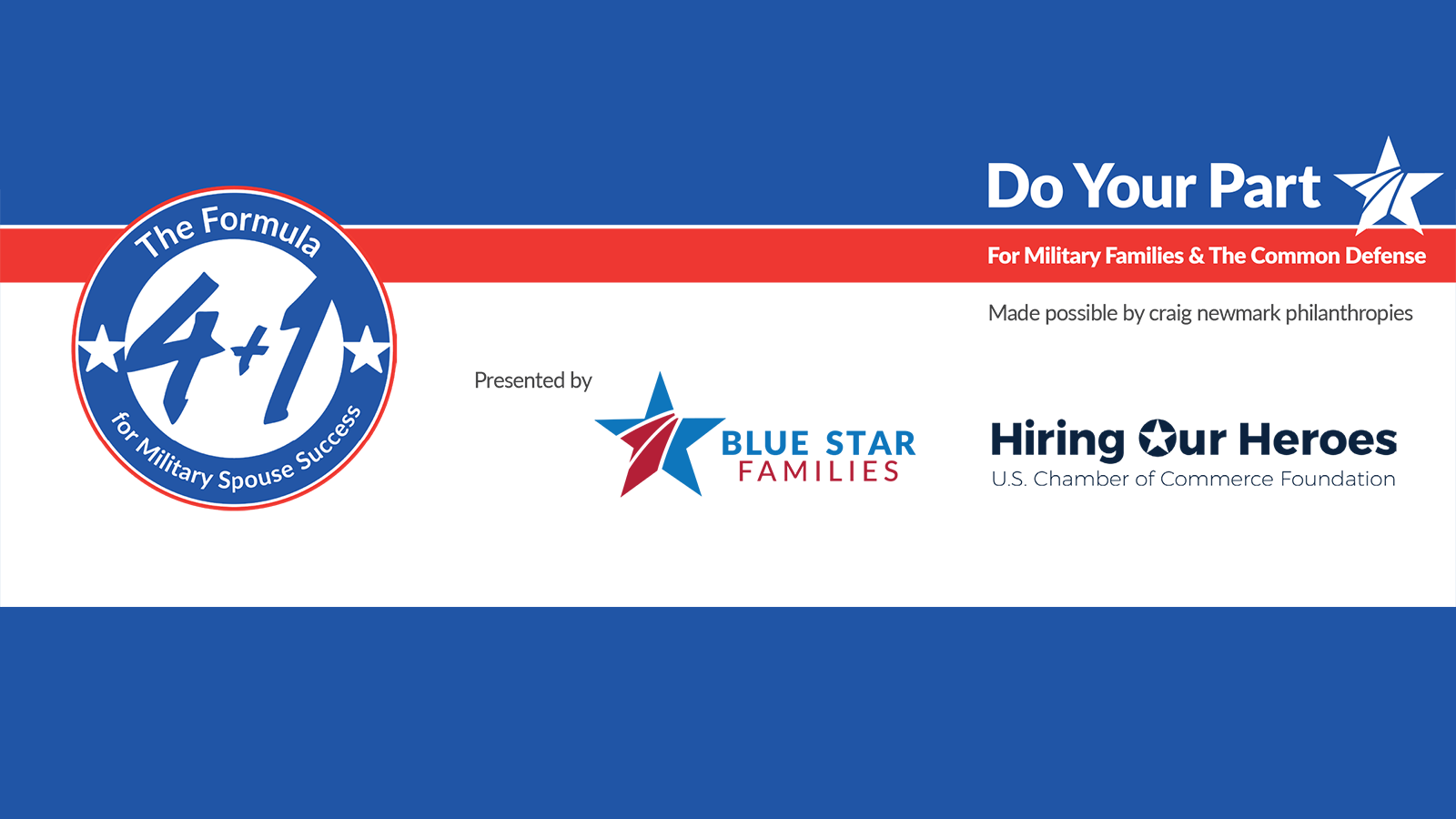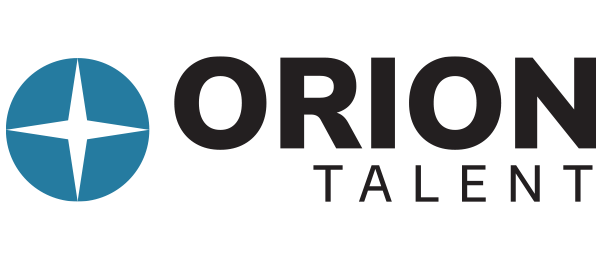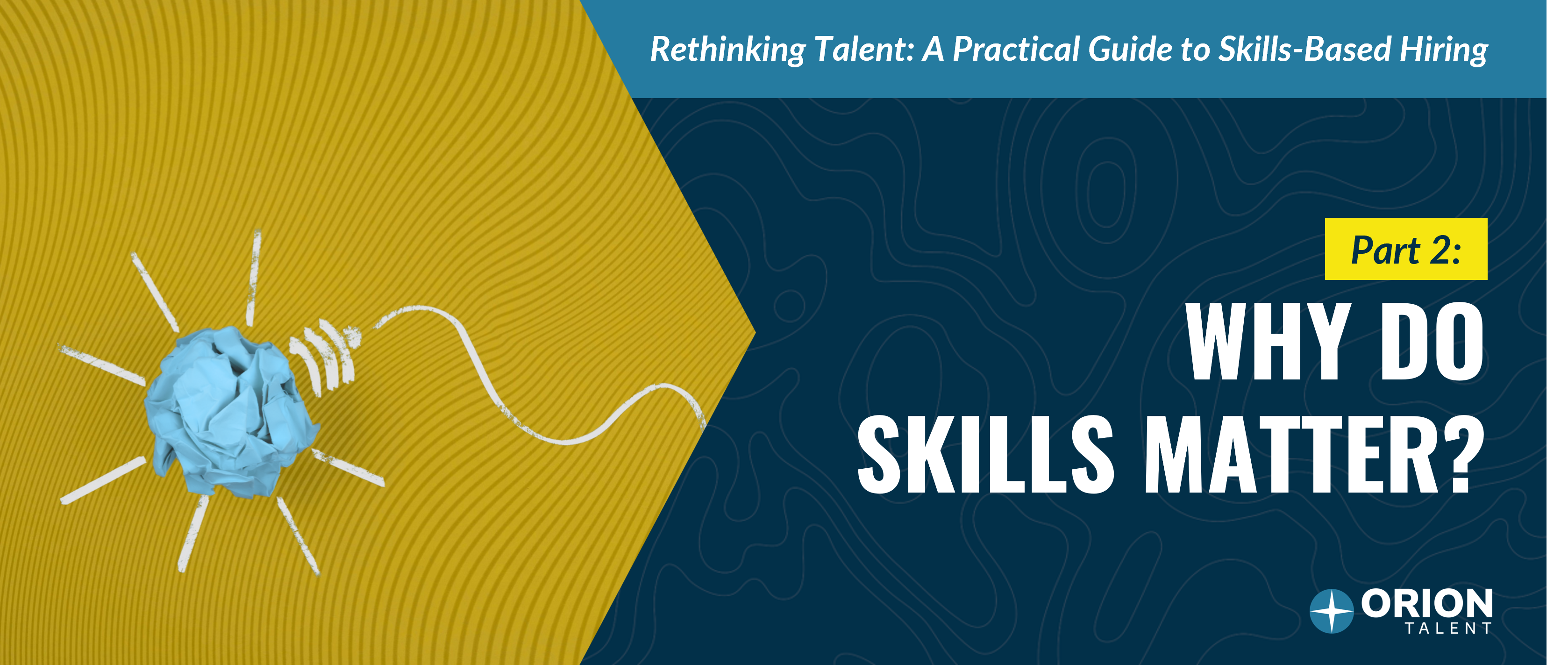
Written by: Stefan Lint, Talent and Workforce Solutions Advisor
PART 2. WHY DO SKILLS MATTER?
Read Part 1: What are Skills, Anyway?
In today's rapidly evolving business landscape, skills have emerged as the true currency of success. For HR and business leaders, understanding and leveraging skills is no longer a luxury, it's a fundamental necessity. This isn't about buzzwords; it's about practical application across every facet of your workforce strategy, from the shop floor to the executive suite.
Read on to learn why skills matter, and how they can strengthen every part of your talent life cycle.
Workforce Planning: Seeing Beyond the Org Chart
Traditional workforce planning often starts and ends with headcount and roles. But in a skills-based organization, it begins with understanding the capabilities you currently possess and, more importantly, the capabilities you'll need tomorrow. Think about it: a shift in manufacturing technology could render certain existing skills obsolete while creating a demand for new ones – perhaps proficiency in robotics, advanced diagnostics, or operation of specific software.
By mapping the skills of your current workforce, you can:
1) Identify critical gaps before they impact business performance
2) Proactively plan for reskilling or upskilling initiatives. (This proactive approach will save significant time and money compared to reacting to skill shortages after they've already impacted productivity.)
3) Spot the areas in which you have an abundance of certain skills, enabling internal mobility and more efficient resource allocation.
Talent Acquisition: Precision Hiring in a Competitive Market
In industries requiring skilled talent, the competition for talent is fierce. Generic job descriptions listing broad responsibilities simply won't cut it anymore. When you understand the specific skills required for a role – not just the job title – your talent acquisition efforts become laser-focused.
Need a welder? Instead of just looking for "experienced welders," you can specify a need for welders proficient in TIG welding for aerospace-grade materials, with certifications in X-ray inspection.
This level of detail in your job requisitions will attract the right candidates, reduce time-to-hire, and significantly improve the quality of your hires. Furthermore, a skills-based approach allows you to identify transferable skills from seemingly disparate industries, opening up a wider pool of potential candidates you might have otherwise overlooked.
Performance Management: Objective Evaluation and Growth
Performance reviews can often feel subjective and vague. Integrating skills into your performance management framework brings clarity and objectivity. Instead of simply rating an employee on "communication" or "teamwork," you can assess their proficiency in specific communication skills relevant to their role – perhaps "ability to clearly articulate technical specifications to non-technical personnel."
This shift allows for more meaningful feedback and targeted development plans. If an employee is excelling in their core technical skills but needs to improve their project management abilities, the performance discussion can revolve around specific training or experiences to develop those particular skills. It creates a clear roadmap for employee growth, fostering a culture of continuous learning and improvement.
Learning & Development: Maximize Your Investment and Impact
Throwing training at a problem without understanding the underlying skill gaps is like shooting in the dark. A skills-first approach to learning and development ensures that every training dollar is an investment, not just an expenditure.
By analyzing skill gaps identified through workforce planning and performance management, you can pinpoint exactly which skills need development across your organization. This allows you to design and deliver highly targeted training programs, whether it's hands-on workshops for new machinery operation, certifications for advanced techniques, or leadership development focused on specific managerial competencies. The result is a more skilled workforce, a higher return on your training investment, and a more agile organization capable of adapting to new challenges.
Succession Planning: Building a Resilient Leadership Pipeline
Succession planning isn't just about identifying who will fill a role; it's about ensuring those individuals possess the necessary skills to succeed. In many skilled trades environments, leadership roles often require a blend of technical expertise, people management skills, and strategic thinking.
By breaking down future leadership roles into their applicable skill sets, you can identify high-potential employees who may already possess some of these skills and then intentionally develop the remaining ones. This might involve cross-training, mentorship programs focused on specific leadership competencies, or external executive education. A skills-based approach to succession planning builds a more robust and resilient leadership pipeline, minimizing disruption and ensuring continuity when key personnel move on.
The Bottom Line: Skills are Your Competitive Edge
For HR and business leaders in companies employing skilled tradespeople, embracing a skills-first approach is not just an HR trend; it's a strategic imperative. It allows you to make more informed decisions about your workforce, attract and retain top talent, enhance employee performance, optimize your training investments, and build a sustainable leadership pipeline.
In a world where change is the only constant, the ability to understand, develop, and deploy the right skills at the right time will be the defining characteristic of successful organizations. Don't just manage headcount, cultivate capabilities. Because in the end, it's the skills of your workforce that will drive your business forward.
Continue to Part 3: How to Get Started With Skills-Based Hiring
Would you like to explore how Skills-Based Hiring can work within your organization? Contact us to start the conversation.
Archives
- December 2025
- November 2025
- October 2025
- September 2025
- August 2025
- July 2025
- June 2025
- May 2025
- April 2025
- March 2025
- February 2025
- October 2024
- May 2024
- March 2024
- February 2024
- January 2024
- December 2023
- November 2023
- October 2023
- September 2023
- August 2023
- July 2023
- June 2023
- May 2023
- April 2023
- March 2023
- February 2023
- January 2023
- December 2022
- November 2022
- October 2022
- September 2022
- August 2022
- July 2022
- June 2022
- May 2022
- April 2022
- March 2022
- February 2022
- January 2022
- December 2021
- November 2021
- October 2021
- September 2021
- August 2021
- July 2021
- June 2021
- May 2021
- April 2021
- March 2021
- February 2021
- January 2021
- December 2020
- November 2020
- October 2020
- September 2020
- August 2020
- July 2020
- June 2020
- May 2020
- April 2020
- March 2020
- February 2020
- January 2020
- December 2019
- November 2019
- October 2019
- September 2019
- August 2019
- July 2019
- June 2019
- May 2019
- April 2019
- March 2019
- February 2019
- January 2019
- December 2018
- November 2018
- October 2018
- September 2018
- August 2018
- July 2018
- June 2018
- May 2018
- April 2018
- March 2018
- February 2018
- January 2018
- December 2017
- November 2017
- October 2017
- September 2017
- August 2017
- July 2017
- June 2017
- May 2017
- March 2017
- February 2017
- January 2017
 RSS Feed
RSS Feed

